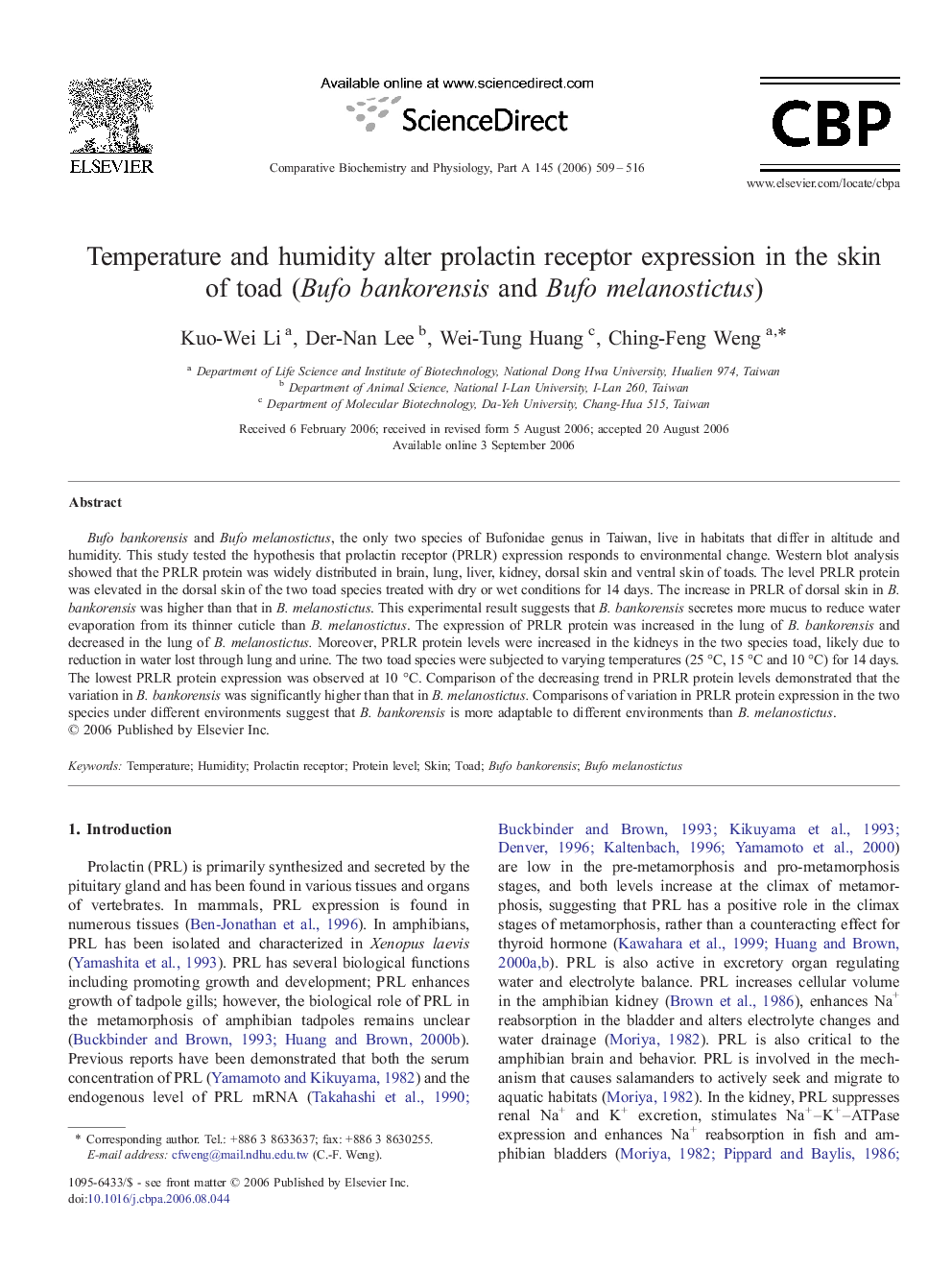| Article ID | Journal | Published Year | Pages | File Type |
|---|---|---|---|---|
| 1974614 | Comparative Biochemistry and Physiology Part A: Molecular & Integrative Physiology | 2006 | 8 Pages |
Bufo bankorensis and Bufo melanostictus, the only two species of Bufonidae genus in Taiwan, live in habitats that differ in altitude and humidity. This study tested the hypothesis that prolactin receptor (PRLR) expression responds to environmental change. Western blot analysis showed that the PRLR protein was widely distributed in brain, lung, liver, kidney, dorsal skin and ventral skin of toads. The level PRLR protein was elevated in the dorsal skin of the two toad species treated with dry or wet conditions for 14 days. The increase in PRLR of dorsal skin in B. bankorensis was higher than that in B. melanostictus. This experimental result suggests that B. bankorensis secretes more mucus to reduce water evaporation from its thinner cuticle than B. melanostictus. The expression of PRLR protein was increased in the lung of B. bankorensis and decreased in the lung of B. melanostictus. Moreover, PRLR protein levels were increased in the kidneys in the two species toad, likely due to reduction in water lost through lung and urine. The two toad species were subjected to varying temperatures (25 °C, 15 °C and 10 °C) for 14 days. The lowest PRLR protein expression was observed at 10 °C. Comparison of the decreasing trend in PRLR protein levels demonstrated that the variation in B. bankorensis was significantly higher than that in B. melanostictus. Comparisons of variation in PRLR protein expression in the two species under different environments suggest that B. bankorensis is more adaptable to different environments than B. melanostictus.
